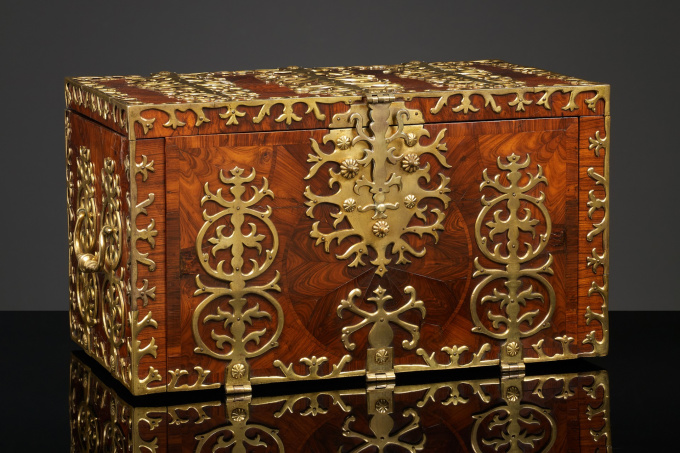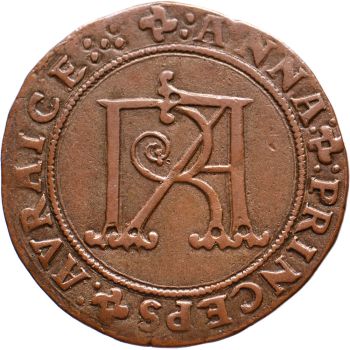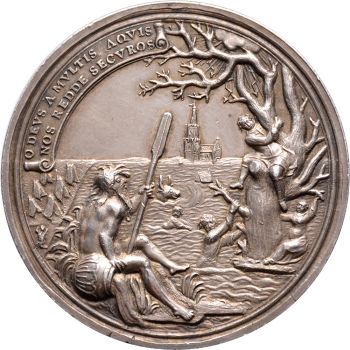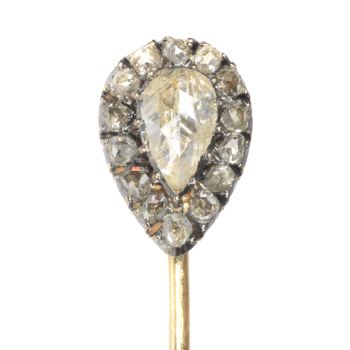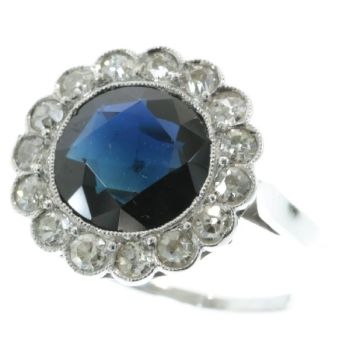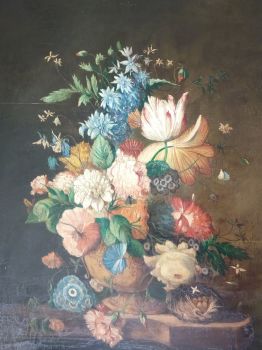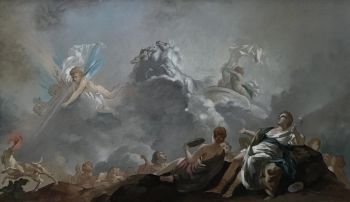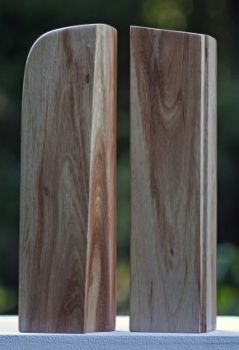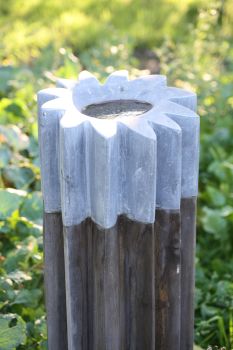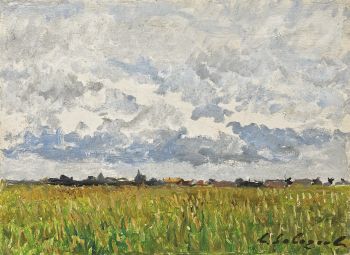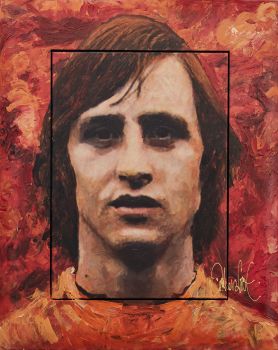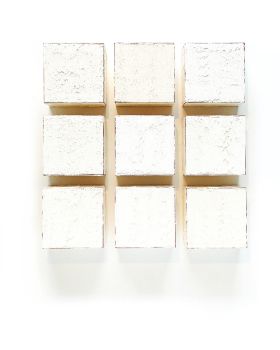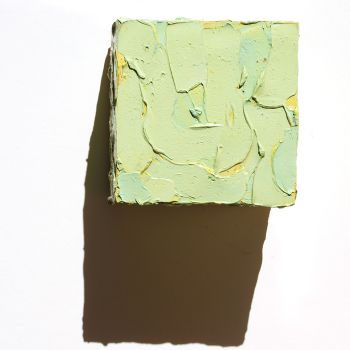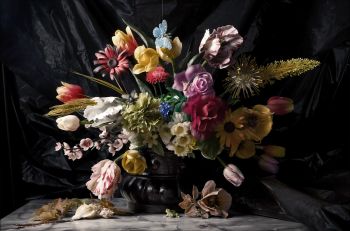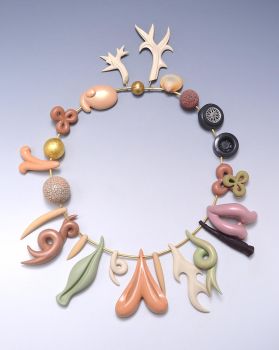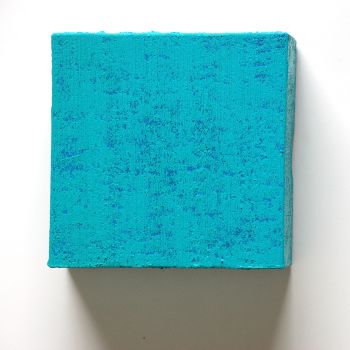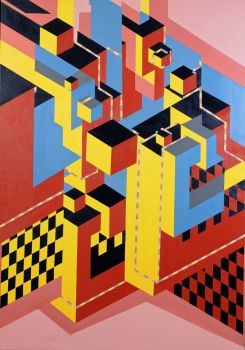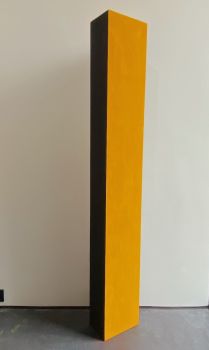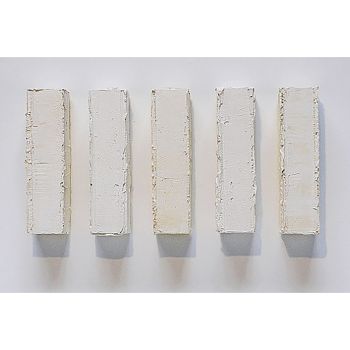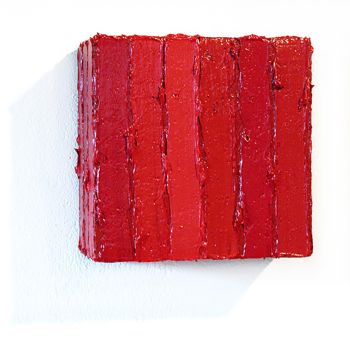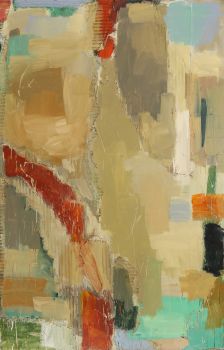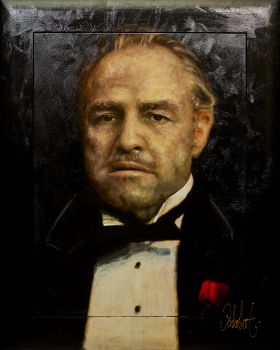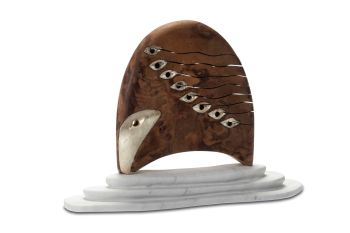Strongbox 1695 - 1710
Artista Desconocido
MaderaOlivaroble
34 ⨯ 62 ⨯ 36 cm
ConditionExcellent
Actualmente no disponible a través de Gallerease
- Sobre la obra de arteAn oak strongbox with olive wood veneer. The box is richly ornamented with brass fittings (with traces of gilding) in the shape of leaves. The elaborate fittings should prevent the box from damage during long travels. The box can easily be moved with the help of the handles on the sides. Centrally there is a large escutcheon, that can be opened with a secret lever. When the lid is lifted, one gets access to the main storage space. In the lid there are to panels that can be opened to hold documents. There are four more secretive storage spaces in the interior. The actual keyhole, used to open the front panel, is hidden behind the lock of the lid.
With a key the front panel can be unbolted. The panel opens to the front. Once opened two small drawers are visible. Hidden to the eye are five more secret compartments. The interior is entirely finished in solid rosewood and rosewood veneer.
In general this type of strongboxes is considered to be French or Flemish. Nevertheless, the vast majority of these cases stem from England. Recent research hypothesizes they were made in London between 1600 and 1720.
The earliest evidence for the production of this type of strongboxes comes from the inventory of Edward Traherne, a renowned joiner who died in London in 1675. Traherne’s trading stock contained a number of shipping and traveling chests with various specifications. It may be noted that several of them still had to be finished.
English furniture makers advertised with “Strong-Boxes” throughout the first part of the eighteenth century. A typical quality of these boxes are the iron rods that are vertically positioned in the side panels and that can be screwed onto the wooden floor of a ship or carriage.
Literature:
London Metropolitan Archives, Orphans’ Court Record, Roll 117, Box 15.
Peter Thornton and Maurice Tomlin, ‘Ham House’, Furniture History, XVI (1980), pp. 1-194.
Th. H. Lunsingh Scheurleer, ‘Documents on the Furnishing of Kensington House’, Walpole Society, Vol. 38 (1960-62), pp. 15-58.
National Archives, LC9/280, 281.
Bowett, Adam. Woods in British Furniture-Making, 1400-1900: An Illustrated Historical Dictionary. Wetherby: Oblong Creative, 2012. 193-94.
Geoffrey Beard and Christopher Gilbert (eds), Dictionary of English Furniture Makers 1660-1840, Leeds (1986, pp. 16 & 200 & 378).
Coleridge, Anthony. Chippendale Furniture: The Work of Thomas Chippendale and His Contemporaries in the Rococo Taste, Vile, Cobb, Langlois, Channon, Hallett, Ince and Mayhew, Lock, Johnson and Others, Circa 1745-1765. Cirencester: Collectors’ Book Club, 1973. 44. - Sobre el artista
Puede suceder que un artista o creador sea desconocido.
Algunas obras no deben determinarse por quién está hecho o por (un grupo de) artesanos. Algunos ejemplos son estatuas de la Antigüedad, muebles, espejos o firmas que no son claras o legibles, pero también algunas obras no están firmadas en absoluto.
También puedes encontrar la siguiente descripción:
•"Atribuido a …." En su opinión, probablemente una obra del artista, al menos en parte.
•“Estudio de….” o “Taller de” En su opinión, una obra ejecutada en el estudio o taller del artista, posiblemente bajo su supervisión
•“Círculo de…” En su opinión, una obra del período del artista que muestra su influencia, estrechamente asociado con el artista pero no necesariamente su alumno.
•"Estilo de …." o “Seguidor de…”. En su opinión, una obra ejecutada al estilo del artista pero no necesariamente por un alumno; puede ser contemporáneo o casi contemporáneo
•"Manera de …." En su opinión una obra al estilo del artista pero de fecha posterior
•"Después …." En su opinión, una copia (de cualquier fecha) de una obra del artista
•“Firmado…”, “Fechado…” o “Inscrito” En su opinión, la obra ha sido firmada/fechada/inscrita por el artista. La adición de un signo de interrogación indica un elemento de duda.
•“Con firma…”, “Con fecha…”, “Con inscripción…” o “Lleva firma/fecha/inscripción” en su opinión la firma/fecha/inscripción ha sido añadida por alguien que no es el artista
Artwork details
Related artworks
Artista Desconocido
Holandeses en miniatura18th century
Precio a consultarZebregs & Röell - Fine Art - Antiques
Artista Desconocido
A large wall map of Asia by Nicolas de Fer 1647 - 1720
Precio a consultarZebregs & Röell - Fine Art - Antiques
1 - 4 / 12Artista Desconocido
A pair of angels Antwerp, 17th century, Carrara marble17th century
Precio a consultarFrederik Muller
Johannes van Dreght
Antique Dutch still life flowers in vase1740 - 1800
Precio a consultarGallerease Selected
Artista Desconocido
Een Gotische zuidelijke Nederlanden wandklok1580 - 1590
Precio a consultarNico van den Assem restauratie
 curada por
curada porDanny Bree
Eduard Charlemont
‘Allegories of Africa and America’1872
Precio a consultarZebregs & Röell - Fine Art - Antiques
1 - 4 / 24Artista Desconocido
A rare Japanese export lacquer medical instrument box1650 - 1700
Precio a consultarZebregs & Röell - Fine Art - Antiques
Artista Desconocido
Japanese transition-style lacquer coffer 1640 - 1650
Precio a consultarZebregs & Röell - Fine Art - Antiques
Artista Desconocido
PAREJA DE ANTORCHAS O VELAS DE TECA DORADA Y LACADA INDONESIA18th century
Precio a consultarZebregs & Röell - Fine Art - Antiques
1 - 4 / 24Artista Desconocido
Two Centaurs, France or Italylate 18th
Precio a consultarRobert Schreuder Antiquair
1 - 4 / 24

